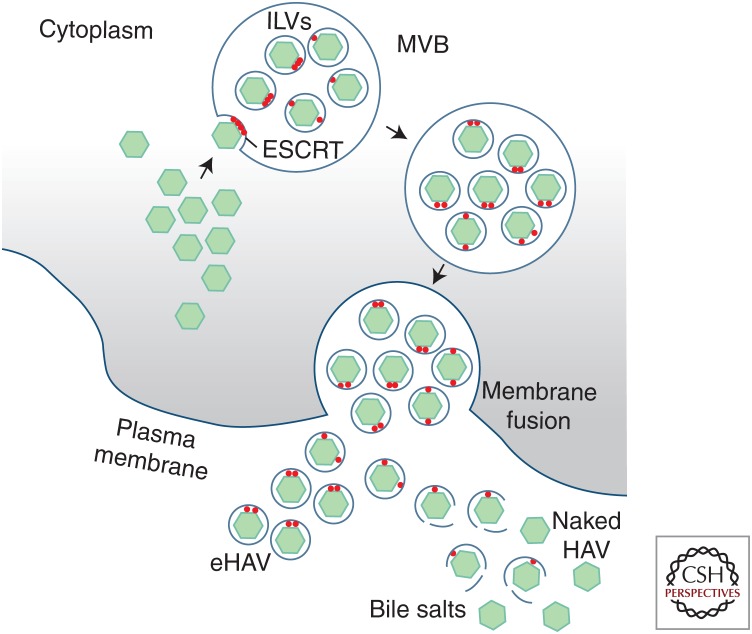Figure 6.
Biogenesis of extracellular quasi-enveloped (eHAV) and nonenveloped virions. Following assembly and packaging of the viral RNA, capsids are recruited to the surface of endosomes through VP2 and VP1pX interactions with components of the endosomal sorting complexes required for transport (ESCRT) system (apoptosis-linked gene 2-interacting protein X [ALIX] and others). Inward budding of the capsids into the endosome results in intraluminal vesicles (ILVs) and formation of multivesicular bodies (MVBs). The MVBs undergo transport to the plasma membrane, where membrane fusion leads to the release of membrane-wrapped eHAV virions to the extracellular space. eHAV virions that are shed from the basolateral hepatocyte membrane into hepatic sinusoids circulate in the blood, whereas eHAV secreted across the apical membrane undergoes conversion to naked, nonenveloped virions mediated by bile salts in the proximal biliary system.

